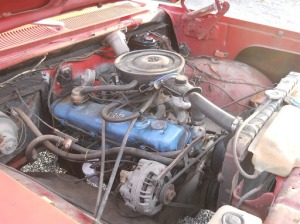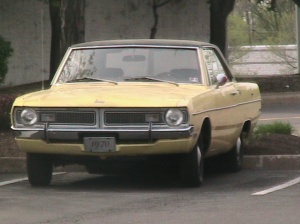William R. Corliss and open problems in science
William Corliss was a physicist and rocket scientist from the heroic golden age of physics. He did great work in everything from nuclear engineering, to telerobotics, to neutron spectroscopy, to space flight; a real universal man in the last exciting time in science. What we know him for most these days though are his catalogs of things we don’t know.

Looked a lot like my late pal Marty as well
He represents exactly my kind of scientist; one who is interested in the cool stuff happening in current year, and all the stuff we don’t know. You infectious human waste “who fucking love science” don’t actually. Science is about the mystery. It’s not a clerisy you can use to bludgeon your political opponents, nor a series of facts you can feel smug about “knowing” about; it’s about appreciating the wonder of all of it. It’s insufficiently appreciated what a bunch of dumbasses humans are, and how little we actually know about matters of the utmost importance to our self understanding as human beings. Most modern clerisy “scientists” couldn’t even tell you about important open problems in their field. They’re too busy filling out forms, grubbing for money and social status, diddling their students and engaging in maoist witch hunts to bother with the reason all honest people become scientists; appreciating the wonders of nature and figuring things out.
Corliss’ work looks like it more or less wrapped up around the mid-90s; it’s truly enormous and it was almost entirely done before the internet era. He has a sensible rating system involving quality of data and extremity of anomaly. Many of the really big mysteries mentioned are still mysteries. It vast, and at this point I own enough of it I don’t have to worry about you guys cleaning up on volumes I may not have yet. Of course, most of it is not so mysterious, but it is at least noteworthy and thought provoking. Pointing out a certain kind of rock formation is weird and interesting is vastly superior to never mentioning the weird rocks.

Contemplate writing two feet worth of authoritative books on biology, astronomy, meteorology, geology and archaeology before Al Gore invented the internet, while maintaining an active career in rocket science. There’s more to it than meets the eye here; this represents the in-print stuff and a few out of print books I managed to get my hands on: there is more of his work is in out of print books, and some of it only exists in his newsletters, some of which his son has preserved online.
Most of it is taken from Science, Nature and other respectable scientific journals. People will grouse about it, because people always grouse, but he seemed to do a bang up job of picking out interesting things for which there are no reasonable explanations, and a lot more things which are merely “pretty damn weird.” Probably using stuff like index cards.
Now some of it may seem fruity to smug yutzes. Dr. Corliss has a section on the Yeti in Biological Anomalies Humans III. However most of the citations are from, as I said, Science and Nature. Should we ignore these lacunae, “fucking love science” dipshits? I think at this point where even primitive barbarians have ipotato, it’s probable there is no Yeti hominid, but Corliss’ probability of this being a big deal back in 1994 is still approximately correct as far as I can tell. Even if the Yeti is ultimately silly and wrong, his preservation of wonderful tales of the Orang Pendek (a legendary sumatran dwarf homonid race) or the Agogwe (african mini yeti) a few pages afterwords makes it all worth while.
Since I’ve got this giant stack of books of weird lacunae in the sciences, as I thumb through them, I’ll post a few here, checked against the latest research, at least as well as the most convenient search engines go. Maybe one or two will be worth a full sperdo nerding out on. Ideally to make some of you think about something useful, but at the very least, kick his kids a few bucks by buying his books.
A few tastes:
Fat tropical animals: here’s one looking us in the face: why the fook would fat animals be happy in the tropics? It’s possibly a recent evolutionary adaptation, hippos being in the tropcs, but it’s bloody weird. Most animals, even people are well suited to the climates they live in with physical adaptations that help. BMI3
Human Mortality Correlated with Geomagnetic Activity: here’s one Corliss rated as fairly low in data quality back when he wrote about it, but top notch as an anomaly if it turns out to be true. The geomagnetic field has weird disturbances correlated with the quasiperiodic solar activity. Apparently this also causes premature death. Obviously nobody knows why, but it is fairly well documented at this point; with the years since Corliss originally wrote about it in BHF32 (Human Anomalies II) (one of his original refs conveniently available here), it’s become fairly well known. I linked seven references above; there are probably a hundred.
Nonrandom Direction-of-Approach of Comets to the Sun: the prevailing theory of the Oort cloud is comets should approach the sun from random directions. People are fairly certain that comet approaches are non-random. Lots of evidence of it; people are more certain than ever that there is something going on here, and various ideas on galactic tidal forces have been proposed to deal with it. (ACB2 The Sun and Solar System Debris)
Bone Caves, Bone Caches and Other Superficial Accumulations of Bones: -this used to be a trope of H. Rider Haggard and Edgar Rice Burroughs books; aka the elephant graveyard of lore. There are numerous examples of this, though Corliss kind of lumps them together in ESD1 (Neglected Geological Anomalies). Some of them are dinosaurs falling into a ravine and being pickled in the moss that eventually becomes coal. But it’s still freaking weird. Other bone caves are just insane; such things used to be considered evidence by geologists for the Great Flood back when that was the dominant paradigm (150 years ago isn’t that long). He gives this top ratings for weirdness; very strong data, very weird phenomenon. Moderns apparently just ignore it, despite the fact that Darwin himself thought it pretty peculiar.
Production-Consumption Discrepancy in Prehistoric Lake Superior Copper Mining. I bet most of you didn’t know that North America had pre-european copper mines; Indians had been mining copper there for 5000 years. Personally I consider this pretty weird in itself. It’s a fact, and it’s largely ignored. What propels it to “holy shit that’s weird” territory is nobody knows what happened to most of the copper (MSE6 “Ancient Infrastructure”). The calculation of how much copper was taken out of there is pretty straightforward, and copper doesn’t disappear easily; there are copper and bronze artifacts from the Americas (and everywhere else) from that long ago. The speculation is that, perhaps Phonecian Merchants (or Egyptians or Aliens or whatever) were trading with the Americas for much longer than we know. It is in principle a knowable thing; one can identify artifacts made with the particular chemical composition of Lake Superior Copper. Not something likely to make you friends in the Archaeology department though.
Open problems in Robotics
Robotics is one of those things the business funny papers regularly wonder about; it seems like consumer robotics is a revolutionary trillion dollar market which is perpetually 20-years away -more or less like nuclear fusion.
I had contemplated fiddling with robotics in hopes of building something that would do a useful science-fictiony thing, like go fetch me a beer from the refrigerator. Seemed like a nice way of fucking around with math, the machine shop and ending up with something cool and useful to fiddle with. To do this, my beer fetching robot would have to navigate my potentially cluttered apartment to the refrigerator, open the door, look for the arbitrarily shaped/sized beer bottle amidst the ketchup bottles, jars of herring, broccoli and other such irrelevant objects, move things out of the way, grasp the bottle and return to me. After conversing with a world-renowned expert in autonomous vehicles; a subset of robotics, I was informed that this isn’t really possible. All the actions I described above are open problems. Sure, you could do some ridiculous workaround that makes it look like autonomous behavior. I could also train a monkey or a dog to do the same thing, or get up and get the damn beer myself.

There really aren’t any lists in open problems in robotics, I am assuming because it would be a depressingly long litany. I figured I would assemble one; one which I assume will be gratuitously incomplete and occasionally wrong, but which makes up for all that by actually existing. Like my list of open problems in physics and astronomy, I could very well be wrong about some of these, or behind the times, and since my expertise consists in google and 5-10 year old conversations with a cool dude between deadlifts, but it seems worth doing.
- Motion planning is an actual area of research, with its own journals, schools of thought, experts and sets of open problems. Things like, “how do I get my robot from point A to point B without falling into a canyon, getting stuck, or being able to deal generally with obstacles” are not solved problems. Even things like a model of where the robot is, with respect to the surroundings: totally an open problem. How to know where your manipulator is in space, and how to get it somewhere else; open problem. Obviously beer fetching robots need to do all kinds of motion planning. Any potential solution will be ad-hoc and useless for the general case of, say, fetching a screw from a bin in the machine shop.
- Multiaxis singularities -this one blew my mind. Imagine you have a robot arm bolted to the ground. You want to teach the stupid thing to paint a car or something. There are actual singularities possible in the equations of motion; and it is more or less an underconstrained problem. I guess there are workarounds for this at this point, but they all have different tradeoffs. It’s as open a problem as motion planning on a macro scale.
- Simultaneous Location and Mapping. SLAM for short. When you enter a room, your brain knows exactly where your body is, and makes a map of the surroundings. Robots have a hard time with this. There are any number of solutions to the problem, but ultimately the most useful one is to make a really good map in advance. Having a vague or topological map or some kind of prior as to the environment: these are all completely different problems which seem like they should have a common solution, but don’t. While there are solutions to some problems available, they’re not general and definitely not turn-key to where there would be a SLAM module you can buy for your robot. I could program my beer robot to know all about my room, but there’s always going to be new obstacles (a pair of shoes, a book) which aren’t in its model. It needs SLAM to deal.
- Lost Robot Problem. Related; if I wake up, and my friends moved my bed to another room; we’ll all have a laugh. Most robots won’t know what to do if it loses track of its location. It will need a strategy to deal with this. The strategies are not general. It’s extremely likely I turn on my beer robot in different positions and locations in the room, and it will have to deal with that. Now imagine I put it somewhere else in the apartment building.
- Object manipulation and haptic feedback. Hugely not done yet. The human hand is an amazing thing, and robot manipulators are nowhere near being able to manipulate with haptic feedback or even simply manipulate real world objects based on visual recognition. Even something like picking up a stationary object with a simple graspable plane is a huge unsolved problem people publish on all the time. My beer robot could have a special manipulator designed to grasp a specific kind of beer bottle, or a lot of models of shapes of beer bottles, but if I ask the same robot to fetch me a carrot or a jar of mayo, I’m shit out of luck.
- Depth estimation. A sort of subset of object manipulation; you’d figure a robot with binocular vision, or even simply the ability to poke at an object and see it move is something pretty simple to do. It’s very much an open problem. Depth estimation is a problem for my beer-fetching robot, even if the beer is in the same place in the refrigerator every time (the robot won’t be, depending on its trajectory).
- Position estimation of moving objects. If you can’t know how far away an object is, you’re sure going to have a hard time estimating what a moving object is doing. Lt. Data ain’t gonna be playing baseball any time soon. If my beer robot had a human-looking bottle opener, it would need a technology like this.
- Affordance discovery how to predict what an object you interact with will do when you interact with it. In my example; the robot would need a model for how objects are likely to behave in moving them aside in searching my refrigerator for a beer bottle.
- Scene understanding: this one should be obvious. We’re just at the point where image recognition is useful: I drove an Audi on the autobahn which could detect and somewhat adhere to the lines on the highway. I’m pretty sure it eventually would have detected the truck stopped in the middle of the road in front of me, but despite this fairly trivial “you’re going to turn into road pizza” if(object_in_front) {apply_break} level of understanding, it showed no evidence of being capable of this much reasoning. Totally open problem. I’ll point out that the humble housefly has no problem understanding the concept of “shit in front of you; avoid,” making robots and Audi brains vastly inferior to the housefly. Even putting the obvious problem aside; imagine if your robot is tasked with getting me a beer out of the refrigerator and there is a bottle of ketchup obscuring the beer. The robot will be unable to deal. Even with a 3-d model of the concept of beer bottle and the ketchup bottle which is absurdly complex to program the robot with.

several of the above problems illustrated
There’s something called the Moravec paradox which I’ve mentioned in the past.
“it is comparatively easy to make computers exhibit adult level performance on intelligence tests or playing checkers, and difficult or impossible to give them the skills of a one-year-old when it comes to perception and mobility”
Robotics embodies the Moravec paradox. There’s a sort of corollary to this that people who work in the tiny field of “actual AI” (as opposed to ML ding dongs who got above their station) used to know about. This was before the marketing departments of google and other frauds made objective thought about this impossible. The idea is that intelligence and consciousness arose spontaneously out of biological motion control systems.
I think the idea comes from Roger Sperry, but whatever, it used to be widely known and at least somewhat accepted. Those biological motion control systems exist even on a microscopic level; even unicellular creatures like the paramecium, or primitive animals without real nervous systems like the hydra are capable of solving problems that we can’t do even in the general case with the latest NVIDIA supercomputer. While robotics is a noble calling and the roboticists solve devilishly hard problems, animal behavior ought to give a big old hint that they’re not doing it right.

Guys like Rodney Brooks seemed to accept this and built various robots that would learn how to walk using primitive hardware and feedback oriented ideas rather than programmed ideas. There was even a name for this; “Nouvelle AI.” No idea what happened to those ideas; I suppose they were too hard to make progress on, though the early results were impressive looking. Now Dr Brooks has a blog where he opines hilarious things like flying cars and “real soon now” autonomous vehicles are right around the corner.
I’ll go out on a limb and say I think current year Rodney Brooks is wrong about autonomous vehicles, but I think 80s Rodney Brooks was probably on the right path. Maybe it was too hard to go down the correct path: that’s often the way. We all know emergent systems are super important in all manner of phenomena, but we have no mathematics or models to deal with them. So we end up with useless horse shit like GPT-3.
It’s probably the case that, at minimum, a genuine “AI” would need to have a physical form and be capable of interacting with its environment. Many of the proposed algorithmic solutions to the problems listed above are NP-hard problems. To me, this implies that crap involving computers such as we use is wrong. We do approximately solve NP-hard problems in other ways all the time; you can do it with soap bubbles, but the design of the “computer” is vastly different from the von Neumann machine: it’s an analog machine where we don’t care about infinite accuracy.
You can see some of this in various proposed neuromorphic computing models: it’s abundantly obvious that nothing like stochastic gradient descent or contrastive divergence is happening in biological neurons. Spiking models like a liquid state machine are closer to how a primitive nervous system works, and they’re fairly difficult to simulate on Von Neumann hardware (some NPC is about to burble “Church Turing thesis” at me: don’t). I think it likely that many robot open problems could be solved using something more like a simulacrum of a simple nervous system than writing python code in ROS.
But really, all I know about robotics is that it’s pretty difficult.
On cultures that build
I tire of the Andreessen spurred discussion of “cultures that build.” I agree with the sentiment; I do miss the America that could make stuff.
I am annoyed that numskulls refuse to face the actual fact of the matter. The historical entity which built most of the stuff you see around you no longer exists. That civilization is dead. Full stop; the end. In fact, the predominant social energy of the moment, backed by most of the mainstream organs of respectable thought, most government agencies, virtually all corporations and collectives, and right thinking people everywhere is to wipe out any remaining historical reminders of that civilization because of muh feels. For example:

People who dislike the idea of tearing down statues are so thoroughly politically vanquished they can’t prevent the destruction of statues of the historical founder of the country. Pardon me if I laugh at the concept of becoming a “culture that builds” at this present moment in time. US culture and its colonial offspring are now cultures of destruction; both at home and abroad. Virtually all organs of US power are organized to not only prevent building things; they’re organized to destroy things.

see a pattern here?
I would say that the chances of the US becoming “a culture that builds” is about the same as the present day municipality of Venice becoming a powerful trade and naval empire in the Adriatic and Bosphorus. The knowledge is gone. The cultural capital is gone; the society that produced those kinds of productive people hasn’t existed in decades. The physical ability to do this is gone; thanks to the globalization our genius economists told us was inevitable, the US lacks the factories, mines and shipyards required to build things. The human material who would actually do the building is gone: dimwit MBAs destroyed the skilled working classes, atomized their communities, continue to demonize and demoralize them and utterly destroyed the kind of basic low level education and social cohesion required to have a productive workforce.
Our technocrats (aka you lot and the morons you went to college with) themselves are typically not capable of working with matter any longer, preferring more profitable and more fashionable masturbatory financialized nonsense that doesn’t pollute the environment. Instead of building Project Pluto, modern american technocrat and managerial types prefer making dopamine rat mazes such as Facebook, imbecile glass bead games like “quantum information theory” or abstract quasi-religious bullshit such as… woke collitch culture and its sinister city-burning, cancel-culture Jacobin offspring.

In fact, one of the main things the US produces at the moment is the type of people who think “cultures that build” are so horrible, visible reminders of them need to be removed from the public square. We don’t produce many innovators, but we produce plenty of people who think remaining builders should be persecuted and made to apologize for having the temerity to excel. We’ve created a managerial caste who is so psychologically fragile they can’t even abide images of success. What are they going to do when they’re asked to do something difficult like invent the transistor or discover DNA, or even skirt San Francisco Zoning Laws?
Let me posit this, fellow builders of things. Politically speaking, the kind of changes required for the country to go back to its past of building and inventing cool things will involve at minimum dealing with the kinds of loathesome barbarians tearing down statues and burning cities. Those people have to be prevented from interfering with both built structures and the present day builders of things. There are a lot of them and they have a lot of free time on their hands to get up to mischief.

Not only that; a productive future will involve active persecution of the evil dimwits responsible for making chimping barbarians think it’s OK to burn it all down. There are a lot of their lot too, and they’re generally comfortably ensconced in schools, foundations, non-profits, government bureaucracies, large corporations, entertainment complexes and other such places of institutional power. These are the people who would implement any government or societal policy. You have to either change their minds or get them out of the way somehow.
These bozos would be pretty easy to deal with if we had the political will to do so. I’m not even talking physically, though there is that; most are noodle-armed vegans or two twinkies from a heart attack. Many of these mentally ill assclowns are so hysterical they actually require trigger warnings to get through the day. You could probably take away their antidepressants and they’d all have to check themselves into the booby hatch. This alone would probably double US economic output. Just removing crazy people from positions of responsibility instead of promoting them would be an enormous help.
Every historical example of a society turning to a productive direction (I dunno, post Revolution France, or Deng era China) involved defanging tin pot Robespierres before anything good happened. Removing statue toppling city burners and their encouragers and enablers as active dangers to the rest of society is table stakes for making a society of builders. The more serious issue is the MBA types who think it’s just fine to ship middle class jobs to the third world, or import new helot worker classes to destroy the bargaining power of local labor because “muh free markets.” These people are sharks, they’re wreckers, and it is they who have weaponized the “woke culture” of the left to prevent the actual left (as opposed to numskulls who think overturning a statue helps anything) from raising their taxes.
None of them are interested in investing money in productive directions; they’re all about pyramid schemes and looting the remaining human and physical capital. These fuckers are burning the proverbial furniture to warm themselves. They’ll have to go, and they won’t go easy because they have all the loot and no loyalties beyond their bank accounts. That includes almost everyone in Andreessen’s shitty industry (reminder: “VC” means “toilet” in Russian): almost none of them are interested in investing in things involving innovation or matter. They’d rather invest in garbage which skirts hotel and taxi laws or become sneaker loan sharks, making everyone else more miserable in the process by socializing the costs.

The society we have right now is a result of the people that compose it. Outcomes won’t change until you at least change minds of the people in charge of running the day to day operations of it. Are you willing to ship NPR reporters, Goldman Sachs bankers, Ford foundation grant administrators, pornographers, Booz Allen Hamilton consultants, mid-level tech managers, 99.8% of Venture Capitalists, and all the 3rd assistant secretaries of education to a potato picking Gulag in North Dakota? Are you willing to at least get them fired so they have to get jobs at Burger King, and put your supposedly waiting-in-the-wings non kakistocrats in charge of their bureaucracies? To be honest, me neither; that’s probably why we can’t have nice things. We’ve built our cages out of iphones, twitter, prozac and people obsessed with their feels and the doings of their crotches. You won’t get any more Edisons or Wozzes or Bardeens in America as long as hysterical imbeciles and demonic looters are preeminent and people who actually lower the entropy of the universe, past, present and future, are demonized.
It’s over; the US has has a remarkable run as a place where regular people could have a nice life, and exceptional people could make exceptional contributions. “Vanished under night’s helm as if it had never been.” Genap under nihthelm, swa heo no wære. Acting like some minor tweak in policy is going to reverse this is laughably insane. Policy fiddling is a ghost dance; trying to bring back 1945 in America when we had a competent and productive civil service, nuclear lightning in our hands, our enemies vanquished at our feet, a largely virtuous and almost fanatically united society, sitting on top of the stock of the world’s capital with a host of giant new high technology factories. That reality and that America is long gone. It has run down the curtain and joined the choir invisible; it is bleedin’ demised. That society isn’t pining for the fields; it’s pushing up the daisies. I’m standing in front of you with a dead parrot society.
I realized it was too late about 7-8 years ago, and organized my life around my exit strategy. The country is too far down kakistocracy, and the remaining decent people are too deluded about the root causes and their potential remedies to ever change things. If you’re still in the US, you live in an evil empire of chaos and destruction, and the best of you are probably serving the worst ends of it.
You can cower under your desks with home-made diapers on your faces hoping some member of a productive society invents a vaccine for the Chinese Lung Butter or whatever phantom (and entirely inflicted by our kakistocrat mandarins) terror of the moment afflicts you. Those N95 factories aren’t coming back, let alone Bell Labs type innovations; even if you wish really really hard.
Automotive memories
When I was a teenage kid in the 80s, my hometown had youth car culture. If you don’t know what this is, check out the old George Lucas movie, American Graffiti for a 1950s version of it. People driving up and down the strip, occasionally racing, getting crappy food, hanging out, getting into fisticuffs in parking lots, playing hide the salami in the back seat of the car parked behind the Zayres department store. Vidya games sucked in those days, and our parents yelled at us if we talked on the phone for too long (twisted pair, yo). I guess there was cable-tv, but the novelty kind of wears off. The closest thing to a wholesome pass-time in my boring suburban home town was driving around aimlessly, blowing giant holes in the ozone layer, giving everyone brain damage and creating acid rain in Canada with our stinky “still uses tetra ethyl lead” old automobiles. I’m sure there are youthful tittering pustules now gasping in horror at the environmental destructiveness of it all: great; have fun furiously thumb twiddling your outwage on your nerd dingus -I pity the new generation of human soybeans.

When you’re a working class teenage kid in a podunk suburb of a 3rd tier city, unless you have rich parents or are a drug dealer, you’re not driving a new car. You’re driving something 10 to 25 years old. In the 80s, on the East Coast, this also meant you’re driving something with gaping rust-holes in it; possibly with “bondo” patches. I remember one of my buddies drove this giant 2-door buick with a “fred flintstone” hole in the floor. Would occasionally drive over puddles when he had someone he didn’t like in the back seat.
The menagerie of cars we drove in those days really were something, and nothing like the things people drive now. One of the cool things about them was they were all “hackable.” You could work on your own car, and in fact, those old cars were meant to be fiddled with. At minimum, you had to fiddle with the carb/s, the voltage regulator and distributor of an old car. Sky’s the limit for fiddlin; swapping an engine or transmission out was a project which could be accomplished by one or two people in an afternoon, even using shitty equipment. Less if you had a real garage with lifts to work in. Most of my youthful colleagues liked fiddling with automobiles. Some of them went on to become engineers and scientists as a result.

The one that got away: Starfire with 10.5:1 ultra high compression pistons, and alas a cracked frame
The car of dreams for a young guy was something like a Hemi Cuda, Boss Mustang, Firebird or Chevelle. A two door “compact” car of its day with sporty styling and a 7+ liter displacement “big block” engine in it producing upwards of 400 horsepower. Modern automakers started making these again a few years back, to cater to my generation; with even more preposterous horsepower numbers as routine equipment. Nobody actually owned one of these, but they might have owned one with a smaller engine in it (I had a couple of Barracudas) and done an engine transplant. That’s just redneck aspirational engineering though. The really cool ones in hindsight were the various kinds of “cigar butts” we got our hands on. Cars that were beat to shit, but had some kind of cool motor or other quality to them.

Satan’s Buick
The Buick I mention above was one of those. It was a two door, which considering how bloody long and boat-like it was, was pretty funny. It only had a 350 in it, but it was a Buick three-fiddy, which meant it had some decent guts to it; often beating newer IROC-Zs (preferred middle class jocko automobile; it looked fast, but the smog system of the day made it a real dog) in a race between stoplights. It also had the most preposterous boat-like suspension; when it was raining, and we were driving it hard on the baloney-skin little 14″ tires, it would occasionally smoothly slide sideways over 4″ curbs without anyone in the car noticing.
New cars were hilarious in those days; particularly US compact cars. I remember one dude whose girlfriend was a middle class girl who owned a Chevy Chevette she more or less bought new. What a trash fire that thing was. Lousy handling, 50 odd horsepower, and the fine engineering qualities we associate with Detroit in the 1980s. It was insanely bad, constantly breaking down, and she probably dated my pal because he was a mechanic. US technology of the day couldn’t figure out how to build a car with decent performance, gas mileage and emissions qualities. This is why everyone who had a choice ended up driving Japanese cars. The smog system on cars in those days was an unholy spaghetti of vacuum hoses and valves which rarely (if ever) worked properly.

the car that made the Yugo look good
I had this thing called an AMC Concord at one point; in principle this sort of car in 4WD form was the origin of the “crossover vehicle.” In actuality mine was an ordinary rear wheel drive. Someone’s older brother bought the thing, handed it down to his bro, who sold it to me when he upgraded to something people wouldn’t make fun of him for driving. It was basically an economy car of the late 70s early 80s; it had a straight-6 engine, and unlike the chevettes was a fairly comfy ride. There are various stories I could tell about my antics with the thing, involving quarts of vodka, offroad adventures with dead deer and sleazey women, but the operative story was how poor I was when I was driving this contraption. For some reason I didn’t think I could afford anti-freeze for the thing in the winter (probably $50 I’d rather spend on gas). I’d just keep the thing running by driving it around all the time, which is more or less what I did anyway. Seemed reasonable, as I worked a lot when I wasn’t plumbing the mysteries of Calculus. It actually worked almost the entire winter, until I slept in on a cold day and the engine block froze. I figured the thing was kaput, so I sold it to the local junkyard for $200 and bought another cigar butt with the proceeds. After the spring thaw I saw it in the junkyard I was picking over for parts for my new cigar butt; a Dodge Dart. Laughing, I stuck my key in it and it fired right up. The block was sturdy enough I guess; same one they used in Jeeps until fairly recently.
The Dodge Dart and Plymouth Valiant was the ultimate cigar butt car. It was a “compact car” of its day; it actually weighed under 3000lbs with a driver in it. The standard engine was this thing called a “slant-6.” A really antiquated inline-6 design with such a large (4.125 inch) piston stroke, it had to be put in the engine compartment at a thirty degree angle. You could have put it in a Studebaker or a Packard sticking straight up and down, but in 60s and 70s contemporary cars, the hoods weren’t so tall and cavernous.

dat slant-6
The thing was bulletproof. This came from a couple of interesting design decisions. Originally it was designed to use a futuristic aluminum block, so the castings were thick to support the aluminum design. To save money, the iron castings were the same as aluminum. The iron blocks could have been made thinner as iron is stronger. Most of the engines ended up being made of iron, a spectacular waste of material from a planned obsolescence point of view, but a huge win for those who owned one. The engine also used giant crankshaft journals; the bearings which kept the engine together. The small bore combined with long stroke helped keep things torquey and fuel efficient. And for some reason they used a forged crankshaft, which is ridiculous overkill on an economy motor that makes 125 horsepower. It also ran really well with good rolling torque; mostly because of the intake manifold design. In those pre-fuel injection days, that was usually the limiting thing about your engine; getting the fuel from the carb jets (basically these were just reversed spray can nozzles) to the combustion chambers over the pistons. The design of the slant-6 intake manifold actually came from Chrysler’s experience with cross ram Max-Wedge engine manifolds; the much cooler looking 7 liter high performance engines that came before the legendary 426 hemi. This, combined with weird antiquated things like … solid lifters; something that hadn’t been standard since the early 60s; combined to make this weird atavism virtually indestructible.
This motor, plus the decently designed carriage of Chrysler A body cars gave the reputation of “only cockroaches and dodge darts will survive the apocalypse.” I’ve had a couple of them, again, you pay a few hundred bucks and drive them until the tires fall off.

While I probably should have worked on my calculus a few years earlier than I did instead of screwing around with hoopty mechanics, the type of thinking and practical experience you’d get from such things was pretty helpful. Putting together anything mechanical in the atomic physics world was pretty trivial after working on weird borked up cars in backyard garages. More to the point; debugging things on these old cars was a great lesson in fixing anything mechanical or electronic. If you can make a ratty old engine purr by fiddling with the carbs and dwell angle on some distributor points, you can make a complex scientific apparatus work.
19 comments